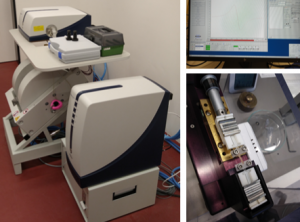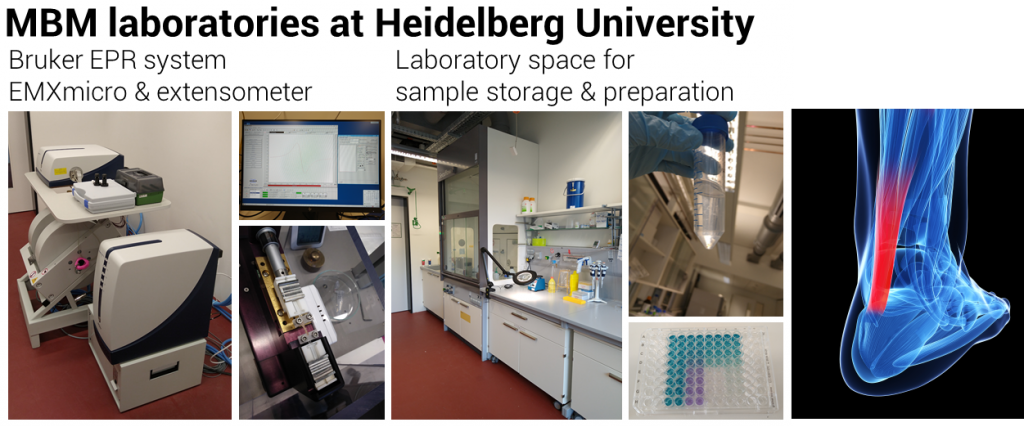Mechanoradicals and DOPA in Collagen Tissue

– A role for dihydroxyphenylalanine (DOPA) as a marker of mechanical stress and radical scavenger in collagen –
Collagen is responsible for the physical strength of tendons connecting bone and muscle. In tendons, the collagen fibres are elastic to some extent, but if over-stretched they can rupture. Together with colleagues from Homburg, Frankfurt, Heidelberg and Seattle, we showed in a series of experiments that homolytic bond rupture in tendon collagen during mechanical stress produces mechanoradicals (Zapp et al., 2020). These are then stabilized by formation of phenoxy-type radicals. Ultimately, the mechanoradicals are degraded to hydrogen peroxide. Thus, our results have a direct impact on the understanding of oxidative stress related disorders in connective tissue, from pain and inflammation to arthritis and tissue ageing.
In this project, we employed a combination of different experimental techniques. A key experiment was to mount and stretch a rat tail fascicle directly in an electron-paramagnetic resonance (EPR) spectrometer cavity to monitor radical formation in real time. It suggests that individual chemical bonds inside this structure rupture and mechanoradicals are formed even if the collagen material remains intact macroscopically. The most stable mechanoradical species observed in tendons were phenoxy-type dihydroxyphenylalanine (DOPA) anion radicals. By mass spectrometry, DOPA was identified as a post-translational modification by oxidation of tyrosine – as a fingerprint in the collagen molecule.
DOPA was previously found in proteins, incorporated either intentionally or as adverse side effect of oxidative stress. The action of collagens’ DOPA as beneficial functionalization and radical scavenger and its biochemical products remains to be further explored. To this end, we have performed radical measurements of various tendon tissues under different conditions, and hereby greatly profit from the new EPR laboratory that we have set up within the 3DMMO Cluster at the Centre for Advanced Materials at Heidelberg University. Currently, we are expanding our experimental branch with support of an ERC grant by additional infrastructure for biochemical and biophysical experiments. All such activities strongly benefit from the direct interface to the groups’ activities in molecular dynamics simulations and quantum mechanical calculations. Check it out here!

Further reading:
Mechanoradicals in tensed tendon collagen as a source of oxidative stress
Christopher Zapp, Agnieszka Obarska-Kosinska, Benedikt Rennekamp, Markus Kurth, David M. Hudson, Davide Mercadante, Uladzimir Barayeu, Tobias P. Dick, Vasyl Denysenkov, Thomas Prisner, Marina Bennati, Csaba Daday, Reinhard Kappl & Frauke Gräter
Nature Communications